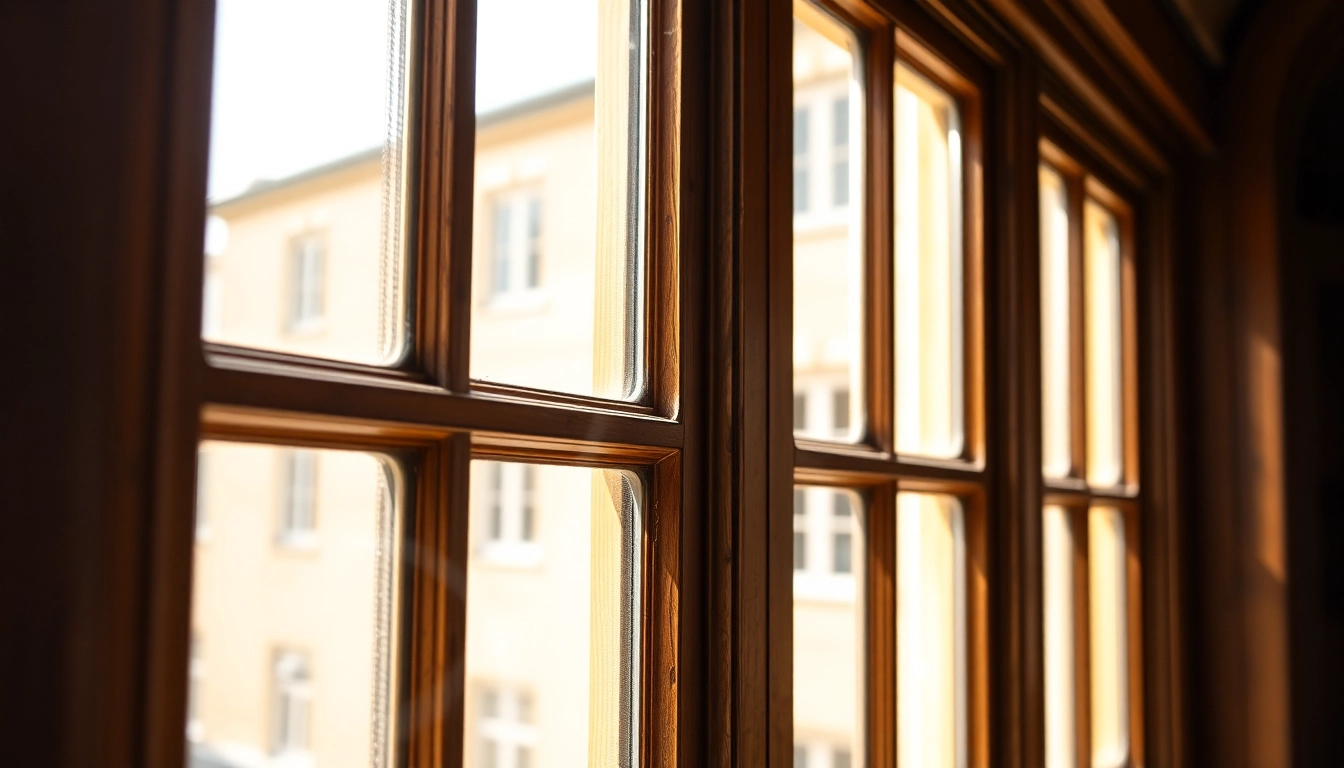Replacement windows are more than a cosmetic upgrade; they are a strategic investment in comfort, energy efficiency, and home value. This guide walks through how replacement windows work, how to choose materials and styles, the installation process, cost considerations, and how to select the right local partner for your project.
Understanding the options and process can demystify a complex decision. For a practical overview of your options and how they apply to homes in your area, explore our guidance on Replacement Windows and then dive into the specifics below.
1. Understanding Replacement Windows and Their Benefits
1.1 What Replacement Windows are and when to consider them
Replacement windows are engineered to fit into an existing frame, preserving the overall structure while upgrading the sash, glass, and sealant to improve performance. They’re typically installed when a home’s current windows are drafty, inefficient, cracked, or failing to seal moisture. For many homes, retrofit installations—where the new sash fits into the existing frame—offer a quicker, less disruptive path to better performance. In older structures with degraded frames or rot, a full-frame replacement may be necessary to restore integrity and long-term durability. The decision often hinges on the condition of the surrounding structure, the desired level of energy efficiency, and the impact on historical or architectural details.
1.2 Replacement Windows: Energy efficiency, comfort, and value
High-quality replacement windows can significantly reduce heating and cooling loads by improving air tightness and reducing thermal bridging. Features such as double or triple glazing, low-emissivity coatings, and gas fills contribute to lower U-values and better solar control, translating to more consistent indoor temperatures and less seasonal expense. Beyond energy savings, new windows reduce outside noise, minimize condensation, and enhance curb appeal. Over time, the combined benefits—lower energy bills, improved comfort, and increased home value—often exceed the initial investment, particularly in climate zones with extreme summers or winters.
1.3 Key performance metrics for Replacement Windows
When evaluating options, focus on objective metrics: U-factor (heat transfer), Solar Heat Gain Coefficient (SHGC), and air leakage. A lower U-factor denotes better insulation; a balanced SHGC depends on climate and orientation; low air leakage indicates tighter seals. Visible light transmission (VLT) affects daylighting, while condensation resistance reflects how windows manage moisture on cool mornings. Warranties and performance certifications from manufacturers provide long-term reliability signals and should be weighed alongside product aesthetics and price.
2. Materials, Styles, and Customization for Replacement Windows
2.1 Frame materials overview: vinyl, wood, fiberglass
Vinyl frames are popular for their affordability, low maintenance, and good energy performance. They resist moisture well but offer limited architectural flexibility and color options. Wood frames deliver classic aesthetics and outstanding insulating potential but require regular maintenance and can be pricier. Fiberglass frames strike a balance, offering strength, stability, and lower thermal expansion, with long-term durability and a broader range of finishes. Each material has trade-offs in cost, maintenance, and performance; the right choice depends on climate, design intent, and willingness to maintain aesthetics over time.
2.2 Popular Replacement Windows styles for homes
Common styles include double-hung for easy ventilation and historical compatibility, casement for tight seals and strong air control, and slider units for space-saving openings. Picture and bay/bow windows maximize daylight and views, while incorporating seating or shelving can transform interior spaces. For contemporary homes, large fixed panels with operable sides offer a modern look with energy efficiency. The style selection should align with room function, ventilation needs, and the home’s architectural vocabulary to maintain harmony with surrounding elements.
2.3 Finishes, hardware, and color customization for Replacement Windows
Finish options extend beyond interior and exterior color to include grille patterns, glass textures, and hardware finishes (polished brass, brushed nickel, matte black, etc.). Grilles can be applied between the panes or on the exterior for a specific design effect. Hardware choices influence usability and maintenance, while exterior colors can complement a home’s brick, siding, or stone details. Thoughtful customization ensures the windows complement the interior decor and exterior character while maintaining resale appeal.
3. The Replacement Process: From Quote to Installation for Replacement Windows
3.1 Getting an accurate quote for Replacement Windows
Accurate quotes begin with a careful in-home or virtual evaluation: precise measurements, assessment of framing conditions, and review of performance goals. A transparent quote should itemize product options, glazing choices, hardware, and installation labor, plus allowances for potential contingencies such as irregular openings or required flashing adjustments. Ask for a written timeline, a detailed scope of work, and a clear warranty outline to avoid scope creep or hidden costs later in the project.
3.2 Retrofit vs full-frame Replacement Windows installation explained
Retrofit installations reuse the existing frame, focusing on the sash and glazing changes. This approach can reduce disruption and lower initial costs, but it may limit energy improvements if the current frame is compromised. Full-frame installations replace the entire unit, including the frame, jambs, and exterior trim. This method enables optimal insulation, a refreshed exterior look, and compatibility with modern weep systems, but it involves more labor and a higher upfront investment. The decision should consider structural integrity, existing rot or damage, and long-term performance goals.
3.3 What happens on install day for Replacement Windows
Installation day typically proceeds with site protection, removal of old sash units, and preparation of the opening. Technicians install new flashed units, seal with high-performance foam or caulk, and secure hardware. They verify operation, check for air and water leaks, and perform a thorough cleanup. A final inspection confirms alignment, sealing, and warranty documentation. Professional installers also advise on maintenance practices to extend the life of the new windows and protect your investment.
4. Cost, ROI, and Financing for Replacement Windows
4.1 Cost drivers and budgeting for Replacement Windows
Costs vary based on material, glass packages, and hardware, as well as the number of units and their sizes. Labor intensity, window geometry, and installation complexity (e.g., weather barriers, trimming, or exterior siding work) contribute to the final price. While a typical project scales with the size of the home and the performance level chosen, budgeting should account for potential upgrades to address framing conditions or the addition of features like energy-efficient coatings or sound-dampening glass.
4.2 Energy savings, incentives, and payback for Replacement Windows
Even with higher upfront costs, energy savings can reduce monthly bills by a meaningful margin, particularly in extreme climates. The payback period often ranges from several years to a decade, depending on climate, window performance, and energy use patterns. In some regions, local incentives, utility rebates, or financing programs can shorten payback and improve overall value. When evaluating ROI, consider not only annual energy savings but also comfort, reduced drafts, and potential resale value improvements.
4.3 Financing, warranties, and maintenance for Replacement Windows
Financing options—from promotional loans to home improvement lines of credit—can help manage the upfront cost. Warranties typically cover the window unit, glass, and installation for a specified period; extended warranties may be available for added peace of mind. Routine maintenance, including gentle cleaning, lubrication of sash hardware, and periodic sealing checks, protects performance and extends the life of both frames and gaskets.
5. Choosing the Right Partner: A Local Guide for Replacement Windows
5.1 How to evaluate installers and warranties for Replacement Windows
Evaluate licensing, certifications, and local references. Reputable installers provide a clear contract, a defined warranty, and documentation of product certifications (such as ENERGY STAR or NFRC ratings). Ask about in-home measurement protocols, post-install cleanup, and the scope of service support after project completion. A partner with a track record of consistent performance and responsive service reduces risk and helps ensure long-term satisfaction.
5.2 Questions to ask and red flags for Replacement Window projects
Key questions include: What is included in the quote? How will frames be prepared for installation? Are there potential hidden costs? Red flags include high-pressure sales tactics, vague timelines, or requests for large up-front deposits before work commences. Request a written project plan with milestones and a detailed warranty policy to avoid disputes later.
5.3 Case studies and performance metrics for Replacement Windows
Effective partners share case studies that illustrate measurable outcomes: reductions in energy usage, improvements in comfort during seasonal changes, and documented shifts in home value or curb appeal. Look for metrics such as observed decreases in drafts, lower utility bills, and consistent performance across different seasons. A transparent installer will provide references or anonymized performance data to help you benchmark expectations for your project.



